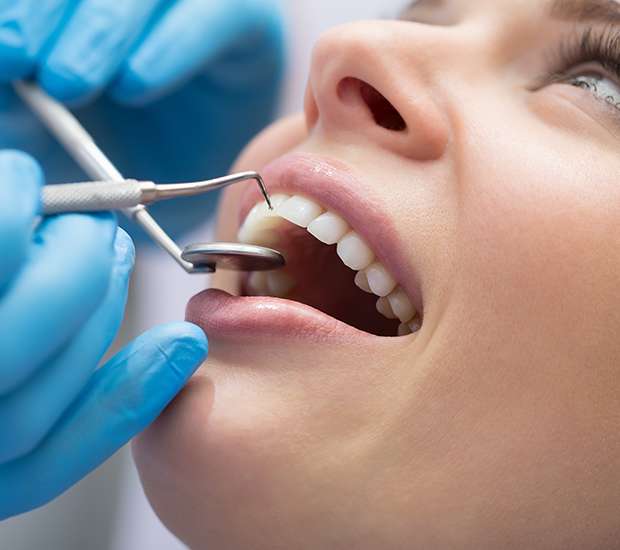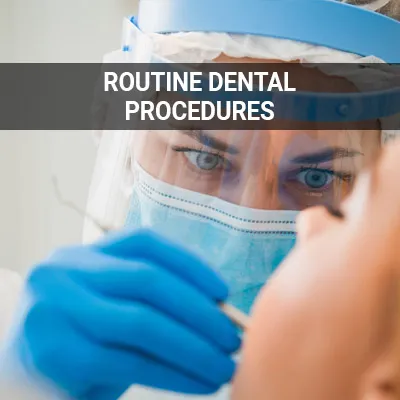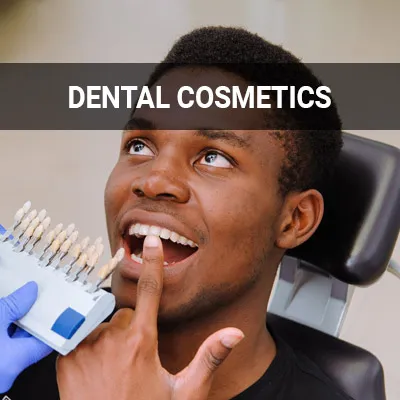Dental Bonding Downey, CA
Dental bonding can restore damaged teeth and give people the confidence to smile. This simple dental procedure can fix various defects or imperfections in teeth. The composite resin in dental bonding is applied and shaped to teeth to provide patients with natural and healthy-looking smiles.
If you are interested in improving your smile, dental bonding may be the right option. Amir Sanjabi Dental offers dental bonding in Downey and the surrounding area. Call us today at (562) 399-9243 to learn more about our services or schedule an appointment.
Understanding Dental Bonding
Dental bonding is a cosmetic dental procedure that can repair tooth damage. The bonding process involves the adhesion of composite resin, a durable plastic material, to the tooth's surface. The tooth-colored resin ultimately bonds to the tooth to improve its overall appearance.
This procedure is helpful for people with chipped, cracked, decayed, or discolored teeth. The composite resin used in dental bonding is pliable, allowing our dentist to customize and mold it into the proper shape or size. Our dentist can also color match the composite resin to closely match it to the natural color of the patient's teeth.
“The bonding process involves the adhesion of composite resin, a durable plastic material, to the tooth’s surface.”
The Right Patient for Dental Bonding
Tooth bonding is a good option for people who have teeth with only minor damage without any significant decay. It is also an effective option for those who are already happy with the color of their teeth. Since dental bonding does not alter tooth color, patients will want to consider whitening their teeth before the dental bonding procedure.
In addition to fixing chips and cracks, dental bonding can help close the spaces between teeth. It is also a good option for patients who want to change the shape of a tooth. Dental bonding is a cosmetic alternative to a traditional metal filling, or to protect the portion of a tooth's root that may have become exposed from receding gums.
“Tooth bonding is a good option for people who have teeth with only minor damage without any significant decay.”
A Good Option for Restoring Teeth
Dental bonding has several advantages over other restoration procedures. Unlike similar procedures, it requires less time in the dentist's chair. It is also minimally invasive and allows patients to keep most, if not all, of their natural teeth.
This procedure is also an alternative to traditional metal fillings. Unlike its metal counterparts, the materials used in bonding do not contain any harmful chemicals or substances. Since it bonds directly to teeth, it helps keep the area free from bacteria and infection.
Of course, bonding does have a few disadvantages as well. The material used in bonding is not as stain-resistant as other materials such as veneers or crowns. It can also be susceptible to chips and breaks. However, with proper care, a dental bond can last for many years.
“Dental bonding has several advantages over other restoration procedures.”
Check out what others are saying about our dental services on Yelp: Dental Bonding in Downey, CA
Process of Dental Bonding
The dental bonding process is quick and relatively non-invasive. Our dentist will select a composite resin color that matches the patient's tooth color before the dental bonding process. If a patient's tooth requires drilling to change its shape or damage near a nerve, our dentist may apply a local anesthetic to minimize discomfort. During the procedure, the tooth surface is roughened and given a conditioning liquid to help the bonding material adhere to the tooth.
Our dentist will then apply, mold, and smooth the resin into the desired shape before hardening the material with a light or laser. Once the resin hardens, it is trimmed, shaped, and polished to match the tooth's surface. The bonding process typically takes one appointment and lasts about 30 to 60 minutes for each tooth.
“The dental bonding process is quick and relatively noninvasive.”
Questions Answered on This Page
Q. What happens during the dental bonding process?
Q. Who is the right candidate for tooth bonding? What can dental bonding be used for?
Q. What are the advantages of dental bonding?
Q. What are the differences between veneers and dental bonding?
People Also Ask
Q. What are the benefits of composite fillings?
Q. Why should I wear a mouth guard while playing sports?
Q. What is dental restoration?
Q. Why is it important to find the right general dentist?
Q. How can I tell what is included in my dental coverage?
Q. Where can I learn more about my dental diagnosis and treatment?
Dental Bonding vs. Veneers
Dental veneers are also a common dental restoration procedure. This thin porcelain material is specifically made to fit onto a tooth. Veneers are more invasive since they require the removal of the natural tooth structure.
Unlike dental bonding, a portion of the tooth will need to be removed so the veneer can fit tightly. It can also take several visits to make sure the fit is perfect. Both options are designed to blend with the color of surrounding teeth.
“Unlike dental bonding, a portion of the tooth will need to be removed so the veneer can fit tightly.”
Frequently Asked Questions
Q. Are there any risks with dental bonding?
A. There are no major risks associated with dental bonding. Keep in mind, a dental bond is not as strong as your natural tooth. Since it can chip or crack, it is a good idea to stop habits such as chewing on ice or biting your fingernails.
Q. How much does dental bonding cost?
A. Dental bonding is more cost-effective than many other restorative dental procedures. Costs vary depending on the location of the bond and the extent of the procedure. Check with your insurance provider to see if dental bonding gets covered under your policy.
Q. How long does dental bonding last?
A. With proper care, a dental bond can last for a decade. Touch-ups can be done if our dentist notices some wear and tear. Plan to take care of your bonded tooth just as you would the rest of your teeth.
Q. What kinds of conditions can dental bonding fix?
A. Dental bonding can address a variety of dental conditions. This includes chipped teeth, gaps between your teeth, fixing a tooth that is an odd shape, and even cosmetic fillings. Our staff can help you determine if dental bonding can correct your smile concerns.
Q. How does dental bonding work?
A. To begin, we create a composite resin material that matches the color of your teeth. The teeth are roughened to allow the resin to bond correctly. We will then apply the resin and use a special curing light to harden the resin, bonding it instantly to your teeth. Lastly, we can reshape and polish any areas as needed to ensure they look as natural as possible with the surrounding teeth.
Dental Terminology
Helpful Related Links
- American Dental Association (ADA). Glossary of Dental Clinical Terms. 2024
- American Academy of Cosmetic Dentistry® (AACD). Home Page. 2024
- WebMD. WebMD’s Oral Care Guide. 2024
About our business, license, and website security
- Amir Sanjabi Dental was established in 2018.
- We accept the following payment methods: American Express, Cash, Check, Discover, MasterCard, and Visa
- We serve patients from the following counties: Los Angeles County
- We serve patients from the following cities: Downey, South Gate, Paramount, Bellflower, Norwalk, Santa Fe Springs, Bell Gardens, Lynwood, Pico Rivera and Whittier
- CA (License #100612). View License Information and Specifics
- National Provider Identifier Database (1992259592). View NPI Registry Information
- Norton Safe Web. View Details
- Trend Micro Site Safety Center. View Details
Back to top of Dental Bonding
















